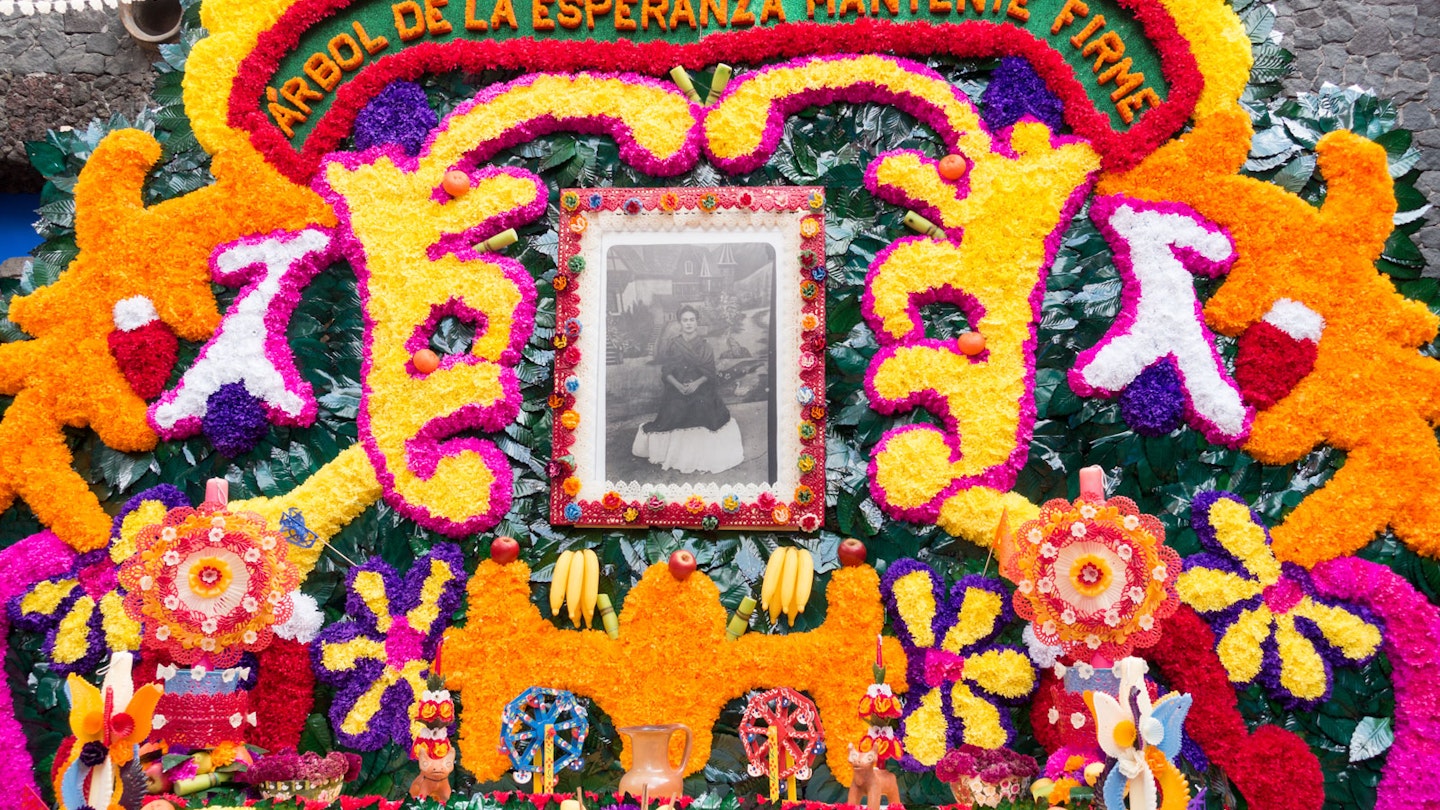The barrier that separates past and present feels thinner in Mexico City than elsewhere in the world. The dynamic culture of the city, and by extension the country, is constantly evolving while simultaneously reaching back into its tumultuous history.
The art, architecture, and cuisine are all inextricably linked to the country’s indigenous roots, colonial influence, and modern movements. At the center of this is pop-culture icon and prolific artist, Frida Kahlo, whose work portrays her most intimate self as a symbol of this uniquely Mexican identity.
Discovering the many places in CDMX that formed Frida Kahlo takes the traveler on a journey into the heart of Mexico’s wonderful contradictions and intensely vivid art world, highlighting how her legacy continues today.
A Past That Won’t Be Denied
The political and cultural center of Mexico City resides in the Zócalo or Plaza de la Constitución. Start your journey there. This colossal city square, surrounded by the National Palace and various government buildings, is punctuated by the Catedral Metropolitana, which was once the ceremonial center of the Mexica city of Tenochtitlán. Kahlo would have walked through this plaza almost daily on her way to school.
Hernán Cortés tried his best to pick apart the Aztec temples and create New Spain from the bricks, but Templo Mayor, which sits adjacent to the cathedral, would not lie in rest. In the early 1970s, electric workers unearthed a stone disk over 10 feet in diameter carved with the image of Mexica goddess Coyolxauhqui. The discovery of this relief prompted interest in ongoing excavations, which from 1978 to 1982 recovered over 7,000 Mexica artifacts. Visitors can tour the Templo Mayor site, stand next to various iterations of the temple, and see firsthand the largesse of a culture that once was and the attempts of another to destroy it.
Education Through Art
Frida Kahlo started secondary school in 1922, not far from the Zócalo. The Antiguo Colegio de San Ildefonso was once home to the National Preparatory School and is just a short walk north of Templo Mayor. Kahlo was one of only 35 girls at a school of 2,000. It is here that Diego Rivera, whom Kahlo would later marry, painted his first mural, launching what became Mexico’s world-renowned muralist movement.
Frida Kahlo watched Rivera compose this first mural dubbed The Creation in a lecture hall of her school. It had been commissioned along with many others by the Mexican government shortly after the Revolution. The aim was to educate the masses, who mostly couldn’t read Spanish, with a visual record of history and politics.
Stirrings of an Icon
Once Kahlo was able to walk again and had been painting for some time, she brought her artworks to Rivera to seek his opinion. In 1928, he was working on a mural at the Secretaría de Educación Pública, which is just a block north of San Ildefonso. Kahlo was 21 when she marched into the master’s workplace to demand a critique of her paintings.
This encounter sparked a romantic relationship, and the two were married a year later in Coyoacán. Rivera was 43 and Kahlo 22. Her parents referred to the union as a “marriage between an elephant and a dove.”
Coyoacán: The Home of a Movement
Frida Kahlo spent much of her life living in the Mexico City neighborhood of Coyoacán. Casa Azul, where she was born, raised, and eventually died, is now a museum dedicated to her life and work. This sprawling hacienda painted electric blue houses everything from Kahlo’s amazing wardrobe to her father’s photography.
Kahlo was deeply influenced by her upbringing. Her father, Guillermo Kahlo, immigrated from Germany, while her mother, Matilde Calderón y González, was from Oaxaca. Kahlo’s choice of dress was part of her creative expression, often incorporating the traditional Tehuana attire, which not only masked her physical ailments but also connected her to the indigenous heritage of Oaxaca, embodying a symbol of female power and independence.
Part of the National Fabric
Frida Kahlo’s art seamlessly combined indigenous symbols with Catholic icons, profoundly exploring themes of self-identity and national identity. Her self-portraits, reminiscent of colonial-era styles, challenged traditional depictions by introducing surreal elements that redefined beauty standards. Influenced both by classical artists and Mexican folk traditions, she significantly contributed to the romantic nationalism movement, known as Mexicanidad, which continues to resonate today.
Fast forward to the present, Mexico City is thriving with a vibrant art scene, design innovations, and culinary delights that pay homage to its complex history while shaping its future. The influence of Frida Kahlo remains deeply embedded in the cultural fabric of the city.





